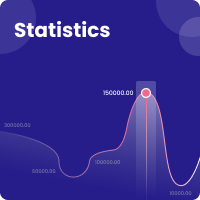Students in the primary and secondary schools regarding the use of ITC as tools of support for their learning
Abstract
In global education in recent decades, the Information Technology and Communication (ITC) as a mediating tool to support the learning process
has been discussed; but in the context of Colombia, the implementation of these tools has been more an imposition for the teachers than a steady process in which students have not been able to participate and express their motivation to engage in a training about tools which for them are common and of frequent
use.
The main objective of this research is to demonstrate why the Colombian Educational System, in regard to the use of technologies, does not take into consideration the preferences and likes of students, who being digital natives need to find a transition from the ICT to the learning and knowledge technologies. This research was carried out following the descriptive non-experimental quantitative design; the participants are students from public educational institutions from the Metropolitan Area. The sample was not selected randomly, and it was defined by convenience. As a result of such sampling, public educational institutions of the municipalities of Medellin, Bello and Girardota were selected; the data collection instrument was a survey applied to students.
The findings show that students mostly use technological devices for personal use and they would like the teachers to incorporate the use of different technological devices in their teaching strategies, using multiple applications that will help them have more dynamic and fun classes. It can be concluded that the different educational systems in some countries like Colombia are not prepared to train current and future digital natives, and that one of the main causes for the digital divide is that those systems do not take into account the opinion of the students, their likes and preferences on how they would like to learn.
References
Ávila de Tomás, J. (2014). Tecnologías de la información y comunicación en atención primaria. FMC - Formación Médica Continuada en Atención Primaria, 19(6), 365-368.
Benarós, S.; Lipina, S. J.; Segretin, S.; Hermida, M. J. y Colombo, J. A. (2010). Neurociencia y educación: hacia la construcción de puentes interactivos. Revista de neurología, 50(3), 179-186.
Castellón, L. y Jaramillo, O. (2002). Las múltiples dimensiones de la brecha digital. Reflexiones académicas, (13).
Claro, M.; Jara, I.; Trucco, D. Espejo, A. (2011). Aporte del sistema educativo a la reducción de las brechas digitales, una mirada desde las mediciones PISA.
De la Torre, A. (2009). Nuevos perfiles en el alumnado: la creatividad en nativos digitales competentes y expertos rutinarios.
Enríquez, S. C. (2013). Luego de las TIC, las TAC. In II Jornadas Nacionales de TIC e Innovación en el Aula. Recuperado de http://sedici.unlp.edu.ar/handle/10915/26514
Escorcia, L. y de Triviño, C. J. (2015). Tendencias de uso de las TIC en el contexto escolar a partir de las experiencias de los docentes. Educación y Educadores, 18(1), 137-152. doi:10.5294/edu.2015.18.1.8
Fajardo, D. (2012). Profesores, aprendan de los nativos digitales. Chasqui, 117, 33-36.
García, F.; Portillo, J.; Romo, J. y Benito, M. (2007). Nativos digitales y modelos de aprendizaje. In SPDECE.
Gil, J. M. S. (2008). De TIC a TAC, el difícil tránsito de una vocal. Investigación en la Escuela, (64), 19-30.
Guzmán A., J. (2010). Estudiantes universitarios: entre la brecha digital y el aprendizaje. Apertura impresa, 8.
Herrera, A. M. (2015). Una mirada reflexiva sobre las TIC en Educación Superior. Revista Electrónica de Investigación Educativa, 1.
Ilanda, M, B. y Sabogal-Modera, M. L. (2015). Trayectos de uso de TIC: caso de la Universidad Javeriana. Magis: Revista Internacional de Investigación en Educación, 7(15), 135-148. doi: 10.11144/Javeriana.M7-15.TDUT
Jaramillo, O. y Castellón, L. (2012). Educación y videojuegos. (Spanish). Chasqui, 117, 11-19.
Lozano, R. (2011). De las TIC a las TAC: tecnologías del aprendizaje y el conocimiento. Anuario ThinkEPI, 5, 45-47.
Muñoz, J. M. (2008). NNTT, TIC, NTIC, TAC... en educación, ¿pero esto qué es? Quaderns digitals: Revista de Nuevas Tecnologías y Sociedad, (51), 13.
Prensky, M. (2001). Nativos digitales, inmigrantes digitales. On the horizon, 9(6).
Prensky, M. (2011). Enseñar a nativos digitales. Ediciones SM.
Said-Hung, E.; Díaz, F. I.; Jabba, D.; Ricardo, C.; Ballesteros, B.; Vergara, E. y Ordoñez, M. (2015). Fortalecimiento pedagógico en las universidades en Colombia a través de las TIC. Caso región caribe. Educación XX1, 18(2), 277-304. doi:10.5944/educXX1.14019
Sabatier, Y. R.; Pons, I. C.; Cao, C. M. M.; Mendoza, G. L. y Álvarez, E. L. (2014). Programa antiestrés de sincronización cerebral mediante estimulación visual. Revista Cubana de Informática Médica, 14(2).
Santos, F. R. (2009). Educación y neurociencia (Spanish). Psicología Educativa, 15(1), 27-38.
Sousa, D. A. (2014). Neurociencia educativa: mente, cerebro y educación. Narcea Ediciones. Recuperado de https://scholar.google.es/scholar?q=Sousa%2C+D.+A.+%282014%29.+Neurociencia+Educativa%3A+Mente%2C+cerebro+y+educaci%C3%B3n.+Narcea+Ediciones&btnG=&hl=es&as_sdt=0%2C5










